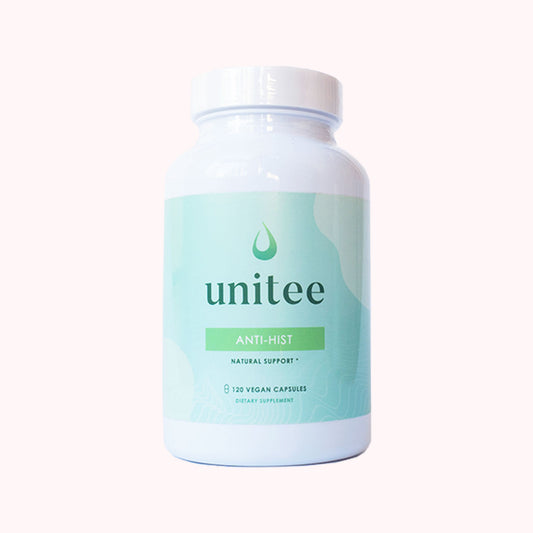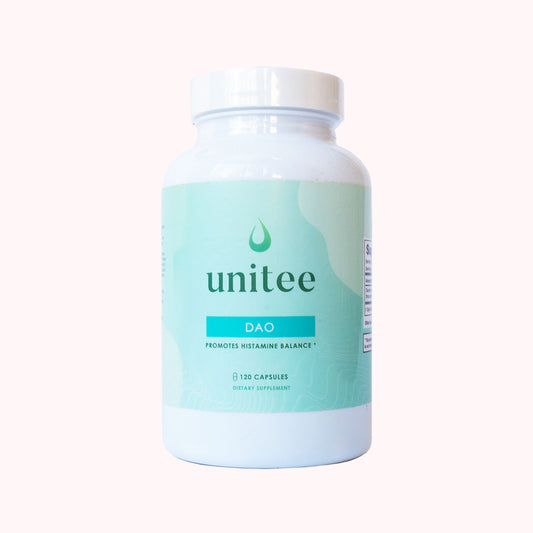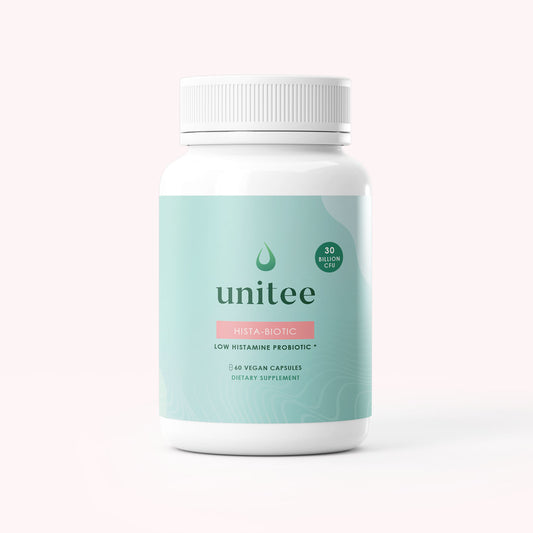Have you ever questioned whether you might have a food intolerance?
All those little - and sometimes not so little - signs and symptoms must mean something. The chronic itching, the swelling around your eyes, the skin rashes, the red cheeks and the stomach pain and diarrhea, must come from somewhere (1). It’s not normal to be experiencing such discomfort on a regular basis.
Perhaps you have already eliminated a whole lot of food for causing a bad reaction after you eat it, but you find yourself still experiencing the same discomfort, even when you eat foods that don’t typically cause allergy-type symptoms.
It may be that you are sensitive to the chemicals used to make our food safer, more colorful, or tastier. Food additives are everywhere - in food, beverages and even in medication (2). And for some of us, our body just doesn't handle them well.
Food additives and histamine intolerance
For some people it starts to feel like they can’t eat anything without having an adverse reaction to it. A histamine intolerance may be to blame for that. Histamine is released when the body perceives that it may be under threat. An immune response is triggered at the site of the perceived threat and histamine is released to help neutralize the problem (2).
The result of the action of histamine is all of the symptoms listed above - an allergy-like reaction. When histamine is not quickly neutralized by the enzymes that are there to break it down once it has done its job, levels start to rise and the symptoms start to last longer. You may now be considered to have histamine intolerance (1).
Certain foods either contain histamine or cause a release of histamine in the gut, making people believe that they are intolerant to the food itself. In some cases, the problem is the histamine response rather than the food. The same immune reaction can be triggered by chemicals in our food, drinks and medication (2).
Can food additives increase histamine levels
Before we can successfully answer this question, we need to know what food additives are and why they are found in our food.
According to the World Health Organisation, “substances added to food to maintain or improve the safety, freshness, taste, texture, or appearance of food are known as food additives” (3). People have been finding ways to make our food last longer for centuries. Salt and sugar were two of the first substances used to keep food edible and safe for a longer period of time. Over time we have discovered even more substances, both natural and synthetic. Today it can be difficult to find a food item on the shelf at the grocery store that does not contain some form of food additive, unless you are buying fresh foods (3).
Although the exact mechanism that causes an intolerance reaction when food additives are consumed is not clear, research suggests that these substances may result in the activation of the mast cells. The mast cells are responsible for the release of histamine when a potential threat is perceived. The most common culprits are sulphite, sodium benzoate and food colourings (4).
Mast cells play a critically important role in determining histamine levels. In fact, it's for this reason that using a natural mast cell stabilizer supplement is one of the most common and effective ways to improve histamine intolerance symptoms.
How to avoid common food additives
Food additives are found in almost all processed foods. To avoid eating them you should try and buy fruit and vegetables that are either fresh or frozen as soon as they are harvested - the more processing they go through and the more shelf stable they are, likely the more food additives they will contain.
Although not all forms of processed shelf-stable fruits and vegetables will definitely contain additives (you should always check ingredients!), what we can say for sure is that eating fresh and organic options is always going to be better.
Avoiding processed meats such as hot dogs and ham is also a good step to take. Perhaps the most useful habit for you to cultivate is making it a norm to read food labels as I mentioned above, and look out for sulphite, benzoate and food colourings (E numbers) in the list of ingredients. You will soon become familiar with the products you should avoid and those that are less likely to be a problem for you (5).
By simply buying organic foods in their whole, unprocessed or minimally processed forms, alongside reading the ingredients labels of any foods that include them - you're actually going to end up dodging the majority of common food additives!
Using a low histamine diet to improve symptoms
Since histamine is responsible for many food intolerance reactions it is essential to consider its role when we are looking for answers.
Histamine is not only released within our body, it is a natural chemical found in many foods. The amount present in the food depends on the type of food, the type of bacteria found in the food and the environmental conditions that allow for fermentation to take place (1).
For this reason it is important that you are aware of the foods that are high in histamine as well as the food additives that may cause an adverse reaction. If you have eliminated common food additives yet still experience food sensitivities to your whole-foods diet, it may be time to consider starting a low histamine diet for controlling your symptoms (6).
If you would like to try the diet or, if you're unsure if a low histamine diet is right for you and want to see the foods list of common high histamine foods that cause symptoms, click below to get the free histamine intolerance foods list.
Professional guidance when cutting high histamine foods out of your diet is important to ensure that you are still eating a healthy balanced diet. Cutting too many foods out of your diet could result in nutritional deficiencies (6). The foods list above also comes with a full detailed diet guide that will explain how to best approach the low histamine diet, along with recipes that are nutritionally balanced.
You do not need to be miserable and struggling with a range of uncomfortable symptoms. Changes to your diet can make all the difference. Incorporate some of the tips above and say goodbye to the flushing, itching, digestive distress and mood issues such as anxiety!
References:
- Becker, J., 2021. A whole load of histamine: Exploring histamine intolerances. [online] Ifis.org. Available at: <https://www.ifis.org/blog/histamine-intolerances> .
- HealthyChildren.org. 2021. Food Additives: What Parents Should Know. [online] Available at: <https://www.healthychildren.org/English/healthy-living/nutrition/Pages/Food-Additives.aspx>.
- Kovacova-Hanuskova, E., Buday, T., Gavliakova, S. and Plevkova, J., 2015. Histamine, histamine intoxication and intolerance. Allergologia et Immunopathologia, 43(5), pp.498-506.
- Skypala, I., Williams, M., Reeves, L., Meyer, R. and Venter, C., 2015. Sensitivity to food additives, vaso‐active amines and salicylates: a review of the evidence. Clinical and Translational Allergy, 5(1), p.34.
- Who.int. 2021. Food additives. [online] Available at: <https://www.who.int/news-room/fact-sheets/detail/food-additives>.
- Worm, M., 2011. Q&A: Food additive intolerance. BMC Medicine, 9(1).

Anita Tee
My name is Anita Tee. I'm a nutritional scientist specializing in histamine intolerance. I hold a Master of Science in Personalized Nutrition and a Bachelor of Science in Human Biology and Psychology.
For the past ten years, I have used my experience in nutritional and medical health sciences to create a scientifically backed, natural approach to healthcare that relies 100% on evidence-based research.
As I previously suffered from - and overcame - histamine intolerance, my focus is to increase recognition and expand the available resources and protocols for resolving this disorder. To date, I have helped over 4,000 individuals fully resolve or better manage their histamine intolerance symptoms.







